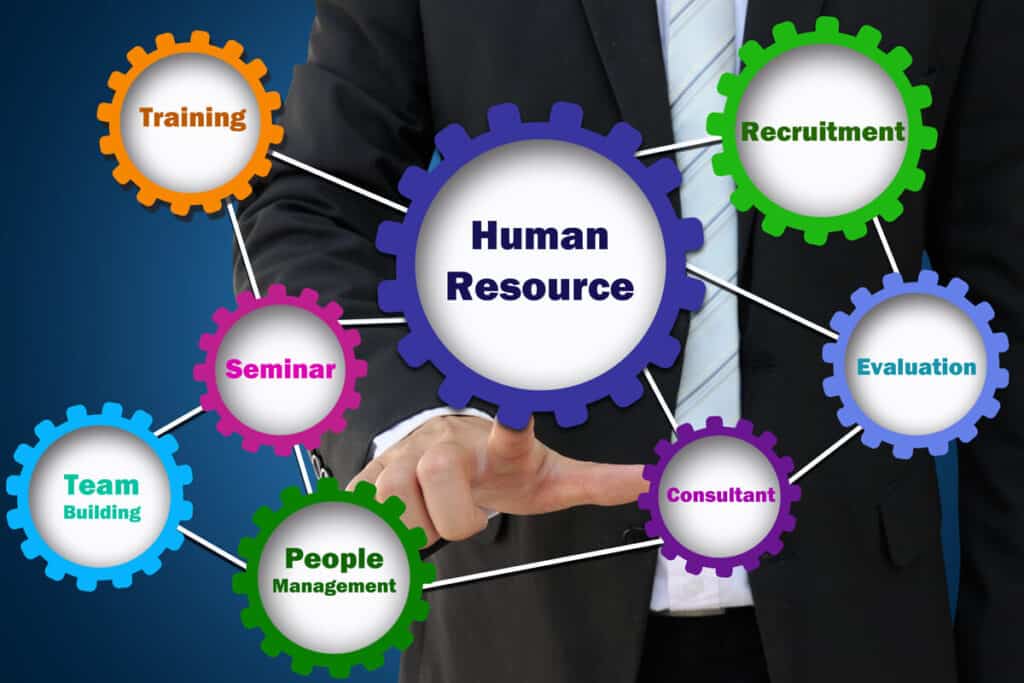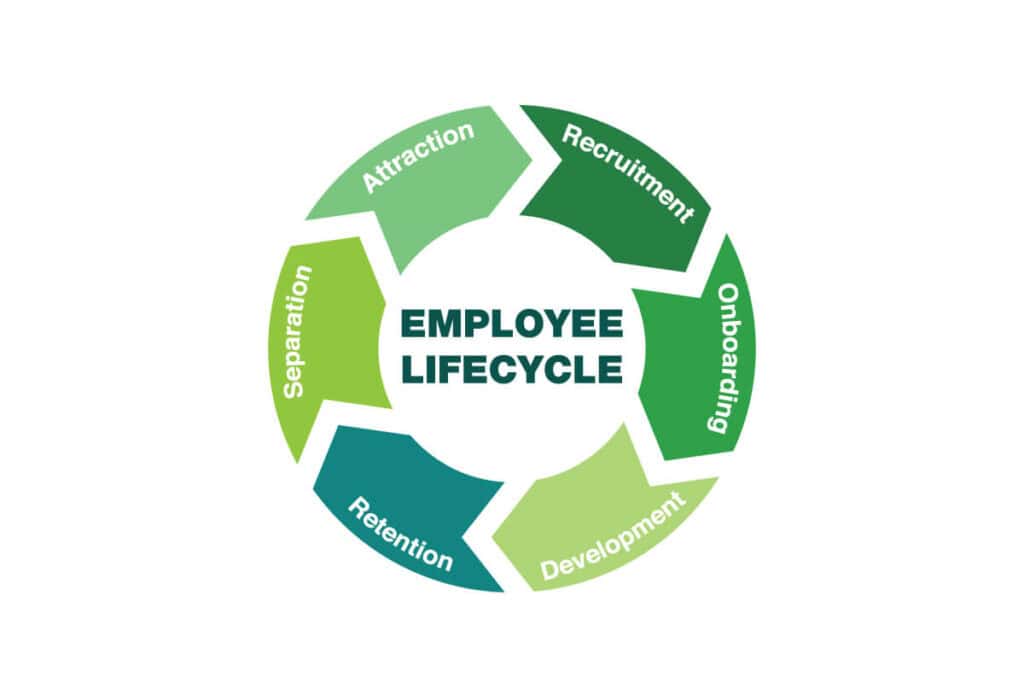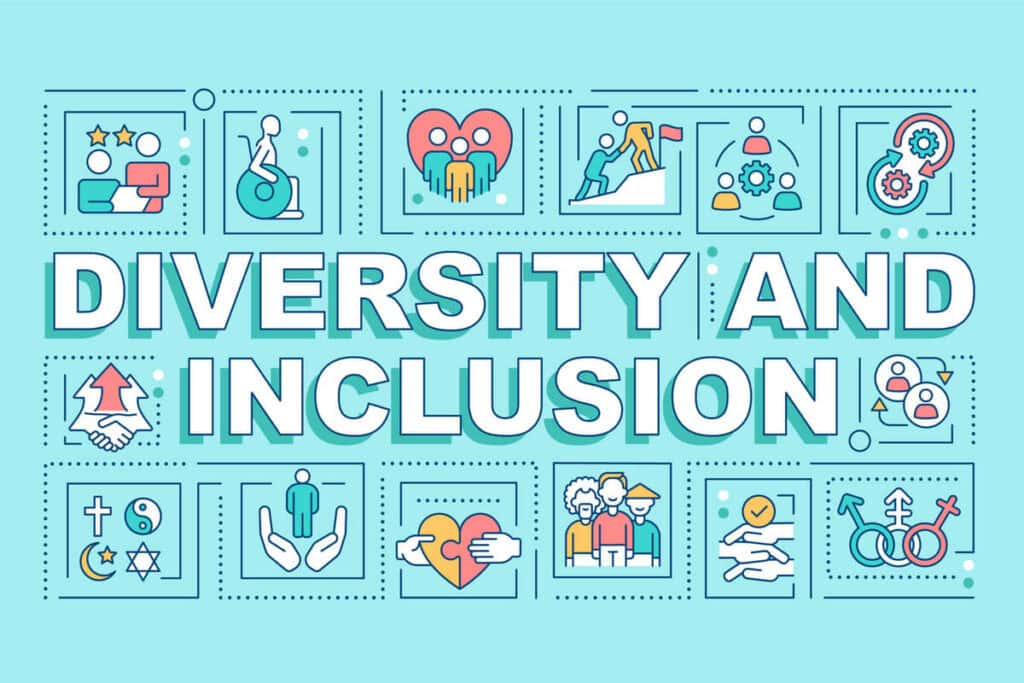Key Highlights
- Successful human resources operations drive business performance by ensuring operational efficiency and effectiveness.
- Key HR operations include recruitment and staffing solutions, payroll management and benefits administration, employee relations, and workplace safety.
- These operations support the entire employee lifecycle, from onboarding to offboarding, and focus on fostering employee development and retention.
- HR operations are crucial in compliance management, ensuring adherence to labor laws and regulations, and promoting workplace equity and inclusion.
- HR operations positively impact company culture by helping to build a positive work environment and shaping the organization’s core values.
- HR operations are key to achieving exceptional business performance. They involve effectively managing the workforce and aligning HR practices with the organization’s overall goals.
Table of Contents
Toggle
Introduction to HR Operations
HR operations encompass the daily activities associated with recruitment, payroll and benefits, employee relations, and workplace safety.
These operations support the employee lifecycle, from onboarding to offboarding, and focus on fostering development and retention. HR operations are also crucial in compliance management, ensuring adherence to labor laws and promoting workplace equity.
HR operations play a vital role in shaping company culture by helping organizations build a positive work environment and shaping core values. They are key to achieving business goals and performance by ensuring a satisfied workforce and aligning HR practices with the organization’s goals. This includes human resource planning to manage current and future workforce needs.

What is Human Resources Operations?
Human Resource Operations, often referred to as HR Ops, refers to the range of activities and processes that support the day-to-day functioning of the human resources department. These operations encompass administrative and operational tasks involved in managing employees throughout their employment lifecycle.
Human resources operations typically include:
- Employee data management,
- Payroll administration
- Benefits administration
- HR policy development
- Compliance with employment laws,
- Employee onboarding
- Employee relations
- HR system management.
These activities ensure the smooth operation of HR functions, support organizational policies and procedures, and contribute to the overall management of the employee experience.
HR Processes and Best Practices
HR processes involve establishing and implementing HR policies and procedures, ensuring compliance with relevant laws and regulations, and managing administrative tasks related to employee information, payroll, and benefits. They also help deliver employee support services effectively, promoting satisfaction and retention.
HR policies provide guidance and direction to employees and managers, ensuring consistency and fairness in the workplace. Administrative tasks include data entry, record-keeping, and reporting, which are crucial for maintaining accurate and up-to-date employee information.
Core Functions of HR Operations
The core functions of human resources operations include recruitment and staffing solutions, payroll management and benefits administration, employee relations and workplace safety, and the role of HR operations in the employee lifecycle.
These functions are essential for managing the workforce, fostering a positive work environment, and ensuring compliance with labor laws and regulations. HR operations also play a crucial role in ensuring equity and inclusion while driving employee development and retention.
Additionally, human resources operations contribute to the company culture, significantly impacting business performance.

Recruitment, Talent Acquisition, and Staffing Solutions
Recruitment and staffing solutions are vital functions of human resources operations. They focus on attracting and selecting qualified candidates to fill vacancies within the organization.
Talent acquisition is a practice concerned with identifying, attracting, and recruiting top talent for the organization. It includes creating job descriptions, sourcing candidates, screening resumes, conducting interviews, and making job offers.
Human resources operations ensure the recruitment process is efficient and effective, aligning it with the organization’s needs and goals.
Recruiting begins with creating a comprehensive job description outlining the qualifications, skills, and experience required for an open position. HR operations then utilize various recruitment channels, such as job boards, social media platforms, and networking events, to attract potential candidates.
Once candidates are identified, human resources operations screen resumes and conduct interviews to assess their suitability for the role. HR operations also facilitate hiring by coordinating interviews with hiring managers, conducting background checks, and making job offers.
Total Rewards and Compensation
Payroll management and benefits administration are essential functions of human resources operations that ensure employees receive accurate and timely compensation and benefits.

Payroll Management
Payroll management ensures the timely calculation and processing of employee wages, salaries, bonuses, and other financial benefits.
HR operations ensure payroll processes are efficient, accurate, and compliant with relevant laws and regulations. This includes maintaining employee records, calculating deductions and taxes, and generating paychecks or direct deposits.

Benefits Administration
Benefits administration involves managing employee benefits programs such as health insurance, retirement plans, and paid time off.
Human resources operations handle the enrollment, communication, and ongoing administration of these benefits, ensuring employees have access to the benefits to which they are entitled.
HR operations also play a crucial role in compliance with benefit laws and regulations, such as the Affordable Care Act, ensuring any benefits offered meet the minimum standards set by law.

Employee Relations and Workplace Safety
The key functions of the employee relations and workplace safety domains of HR operations are creating a positive work environment and ensuring the well-being of employees.
Managing Employee Relations
Employee relations focuses on managing the relationship between employees and the organization, fostering a positive work culture, and addressing any concerns or conflicts.
HR operations achieve this by playing a crucial role in promoting open communication, resolving disputes, and ensuring fair treatment of employees. This includes implementing policies and procedures that support positive employee relations, conducting employee surveys, and facilitating feedback and recognition programs.
Ensuring and Managing Workplace Safety
Workplace safety is another important aspect of human resources operations. HR operations develop and implement workplace safety policies and procedures, ensuring compliance with health and safety regulations.
This includes conducting safety training, establishing procedures for reporting workplace incidents, and maintaining a safe and healthy work environment. Human resources operations also play a vital role in emergency preparedness and crisis management.

The Role of HR Operations in Employee Lifecycle (Onboarding, Job Changes, Separations)
HR operations manage the entire employee lifecycle, from onboarding to offboarding, with career development and job changes in between. This function ensures a seamless transition for employees throughout their employment journey and focuses on providing a positive employee experience.
From onboarding new hires and ensuring a smooth transition into the organization to offboarding employees and conducting exit interviews, human resources operations support the various stages of the employee lifecycle.
They achieve this by implementing processes and systems that facilitate effective onboarding, providing training and development opportunities, and conducting performance evaluations. HR operations also play a crucial role in fostering employee development and retention, ensuring employees have opportunities for growth and advancement within the organization.

From Onboarding to Offboarding: A Seamless Transition
From the moment a new hire joins the organization, HR operations are crucial in ensuring a seamless transition into their new role and helping new employees feel welcome. This includes onboarding activities such as completing necessary paperwork, providing access to company resources, and introducing them to the organization’s leadership, culture, and values.
Human resources operations focus on creating a positive employee experience during onboarding, ensuring that new hires feel welcomed and supported. This includes assigning mentors or buddies, providing training programs, and facilitating introductions to key team members.
Similarly, HR operations also play a vital role in offboarding employees. This includes conducting exit interviews to gather feedback and insights, ensuring a smooth transition for the departing employee, and taking necessary steps to protect sensitive company information.
Fostering Employee Development and Retention
Employee development and retention are important activities of HR operations throughout the employee lifecycle. It’s focused on fostering employee growth, enhancing their skills, and providing opportunities for advancement within the organization.
Talent management involves identifying high-potential employees, creating development plans, and providing training and mentoring programs that enable them to progress in their careers. In this way, human resources operations ensure employees have the necessary skills and resources to succeed in their roles and reach their full potential.
Employee retention strategies and initiatives that promote job satisfaction and engagement are also critical parts of HR operations. These include creating a positive work environment, providing competitive compensation and benefits, recognizing and rewarding employee contributions, and promoting work-life balance.

HR Operations and Compliance Management
Compliance management ensures adherence to labor laws, regulations, and internal policies. HR operations are critical in keeping the organization compliant with relevant laws and regulations and mitigating legal and financial risks.
Compliance management involves staying up-to-date with evolving labor laws, conducting regular audits and assessments, and implementing policies and procedures that align with legal requirements. Human resources operations also provide training and disseminate relevant information to employees and managers to ensure compliance.
Labor Laws and Regulations
Labor laws and regulations form the foundation of HR operations’ compliance management function. HR operations ensure that the organization complies with these laws and regulations to protect the rights and well-being of all employees.
Compliance with labor laws involves understanding and implementing regulations related to areas such as minimum wage, overtime, working hours, leave entitlements, and anti-discrimination laws. Human resources operations must stay up-to-date with any changes or updates in labor laws and ensure that the organization remains compliant.
Additionally, HR operations develop and implement HR policies and procedures that align with labor laws and regulations. This includes creating policies for equal employment opportunities, workplace harassment, and privacy protection.
HR operations also conduct regular audits and assessments to identify areas where the organization is not compliant and take necessary corrective actions.

Ensuring Workplace Equity and Inclusion
Workplace equity and inclusion are essential to HR operations’ compliance management function. HR operations focus on promoting a safe and inclusive work environment and ensuring the fair treatment of all employees.
Workplace equity requires equal opportunities and fair treatment to all employees, regardless of their background, gender, race, sexual and gender preferences, or other protected characteristics. Human resources operations develop and implement policies and procedures that promote workplace equity, such as equal pay for equal work and anti-discrimination policies.
Inclusion focuses on creating an environment where all employees feel valued, respected, and included. HR operations facilitate diversity and inclusion initiatives, such as employee resource groups, diversity training programs, and hiring practices that promote diversity.
Additionally, human resources operations play a crucial role in workforce planning. They ensure the organization has a diverse and inclusive workforce that reflects the community it serves.

Impact of Human Resources Operations on Company Culture
The activities performed by HR operations significantly impact company culture. An organization’s culture is shaped by its values, beliefs, and practices, and human resources operations play a crucial role in fostering a positive work environment and promoting the organization’s core values.
HR operations focus on building a positive work environment by implementing policies and initiatives that promote open communication, collaboration, and employee well-being. This includes recognizing and rewarding employee contributions, promoting work-life balance, and providing opportunities for personal and professional growth.
Building a Positive Work Environment
The primary focus of HR operations is building a positive work environment and supporting employees. Their activities create a culture that promotes employee well-being, collaboration, and a sense of belonging.
HR operations implement policies and initiatives that foster open communication, respect, and inclusivity. This includes promoting work-life balance, recognizing and rewarding employee contributions, and providing opportunities for professional development.
A positive work environment also involves cultivating a sense of teamwork and collaboration among employees. Human resources operations facilitate team-building activities and provide support and resources to help teams work effectively together.
Overall, HR operations contribute to building a positive work environment by promoting a culture of trust, engagement, and mutual respect among team members.
Strengthening Employer-Employee Relationships
Employee engagement is a key function of HR operations. By focusing on initiatives that strengthen the employer-employee relationship, HR professionals can ensure a positive and productive work environment. This can be achieved through various HR initiatives such as employee recognition programs, flexible work arrangements, and fair compensation strategies.
Creating a culture of open communication and providing opportunities for growth and development are also essential in fostering strong employer-employee relationships. Human resources operations can implement programs that promote employee feedback and act on it, creating a sense of employee appreciation and motivation.
Additionally, HR operations can be pivotal in resolving conflicts and addressing employee concerns, ensuring that the employer-employee relationship remains healthy and mutually beneficial. By prioritizing employee engagement, Human resources operations contribute to higher levels of job satisfaction and overall business performance.
Making Use of HR Technology for Operational Efficiency
Incorporating HR technology into operations and automating administrative tasks are crucial for enhancing operational efficiency. HR professionals can leverage software solutions to streamline employee data management, payroll administration, benefits administration, and policy development. By automating these tasks, HR operations can save time, reduce errors, and improve overall efficiency.
Moreover, HR technology can enable employees to have self-service capabilities, allowing them to access and manage their HR-related information independently. This reduces the administrative burden on HR professionals and empowers employees to take ownership of their personal needs.
Implementing HR Software Solutions
HR software solutions play a crucial role in HR operations. These systems provide a centralized platform for managing employee data, streamlining processes, and ensuring compliance with relevant laws and regulations.
HR information systems (HRIS) are commonly used in human resources operations to automate administrative tasks such as employee data management, payroll processing, and benefits administration. These systems enable HR professionals to access and analyze data more efficiently, allowing for better decision-making and strategic planning.
Additionally, HR software solutions often include recruitment and talent management modules, performance management, and employee self-service portals. These tools enable HR operations to streamline and automate the entire employee lifecycle, from recruitment and onboarding to performance evaluation and offboarding.

HR Tech: Automation and AI
Automation and artificial intelligence (AI) are transforming human resources operations by streamlining processes, improving accuracy, enabling data-driven decision-making, and automating service delivery.
Automation can be used for various HR tasks, such as data entry, employee onboarding, and benefits administration. This enables HR professionals to focus on more strategic initiatives and improve operational efficiency.
AI technologies, such as chatbots using natural language processing, can enhance employee self-service capabilities and provide instant support to employees. These technologies can answer frequently asked questions, guide employees through HR processes, and provide personalized assistance.
Data analytics is another area where HR technology can drive insights and inform decision-making. By leveraging data from HR systems, HR operations can identify trends, predict future needs, and make data-driven decisions that optimize workforce performance and engagement.
Overall, HR technology, including automation and AI, empowers human resources operations to deliver more efficient, accurate, and strategic services to employees and the organization.
Conclusion
In conclusion, Human Resource Operations are pivotal in fostering employee engagement, ensuring compliance, and cultivating a positive workplace culture. From recruitment to offboarding, every aspect of the employee lifecycle is closely managed by HR Operations professionals. By embracing technology for operational efficiency and adhering to best practices, organizations can enhance their performance and create a conducive work environment. Continuous improvement, strategic planning, and measuring success through key performance indicators are essential for the success of human resources operations.




